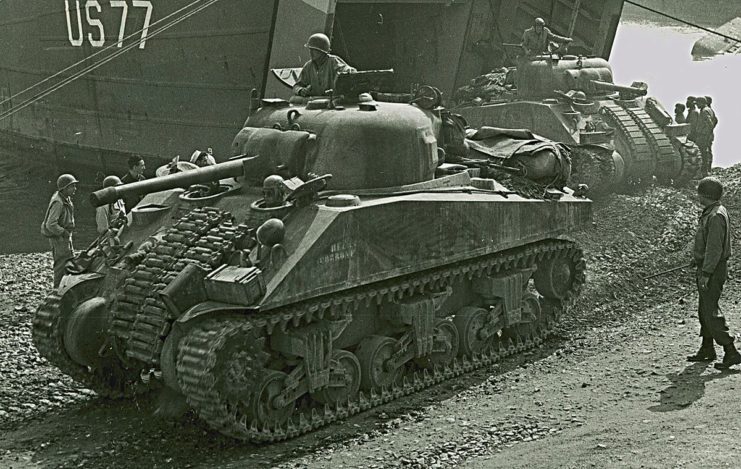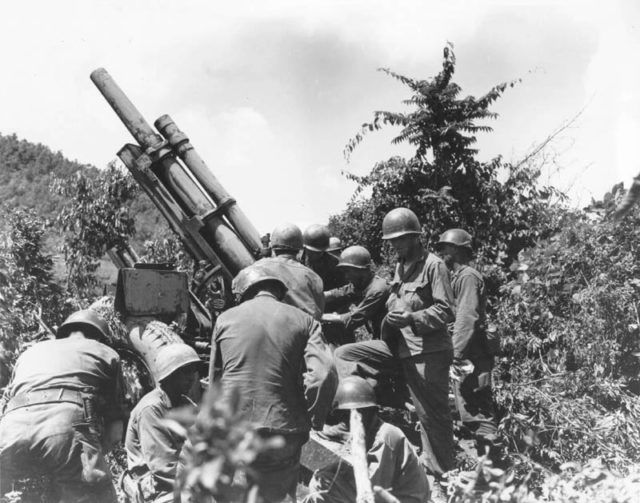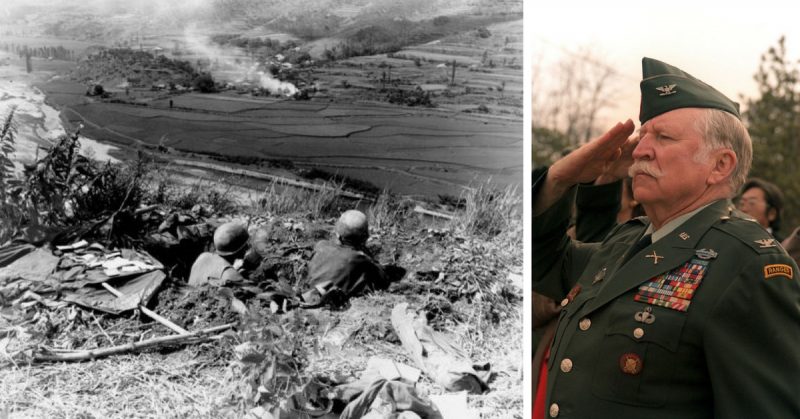The grizzled-looking redhead, complete with a handlebar mustache, charged with his men. Their enemy did not stand a chance as they had very sophisticated weapons – the bayonet.
Lewis Lee Millett Sr. was born on December 15, 1920, in Mechanic Falls, Maine. His grandfather had served in the American Civil War, while an uncle had fought with the 101st Field Artillery Regiment of the Massachusetts Army National Guard during WWI. Millett joined the Massachusetts National Guard in 1938 while he was still in High School, enlisting in his uncle’s regiment.
The following year, Germany invaded Poland, ushering in WWII. By 1940 Millett was in gunnery school with the US Army Air Corps. In 1941, frustrated by America’s reluctance to enter the war and eager to fight, he deserted. He and a friend hitchhiked across the border and joined the Canadian Army. They assigned him to the Royal Regiment of Canadian Artillery where the training was quite unlike any he had in the US.
“The Canadian infantry was always doing bayonet training,” he later recalled. “Stabbing straw-filled dummies, parry, thrust, shouting. It made an impression on me.”
Sent to Britain Millett underwent commando training. He was also trained as an anti-aircraft radar operator and was stationed in London during the Blitz – the German carpet bombing of British cities between September 1940 and May 1941.
Following the Japanese attack on Pearl Harbor in December 1941, America entered the war. No longer stimulated by radar work, Millett went to the US Embassy in London and rejoined the US Army. He became an anti-tank gunner with the 27th Armored Field Artillery Regiment, 1st Armored Division.

Millett served in Tunisia in North Africa where he became a hero when his group came under fire, and a half-track truck filled with ammunition burst into flames. He jumped into the vehicle and drove it away from Allied soldiers then leaped off before it exploded. He was awarded the Silver Star – the third highest military decoration.
He later shot down a German Messerschmitt Me-109 fighter plane with a half-track mounted machine gun. Millett, by then a sergeant, took part in the Allied invasion of Italy and saw combat at the Battle of Anzio (January – June 1944) that led to the capture of Rome.
While he was serving in Italy, the Army found out about his desertion. Despite Millett’s achievements, heroism, and medals, the army did not take kindly to deserters. He was court martialed, convicted, ordered to pay a fine of $52 ($810 in 2017 values), and denied leave.
Just a few weeks later he was promoted to the rank of second lieutenant and given a battlefield commission. Fortunately, he survived the war and returned home to a hero’s welcome. Millett then went to college. In June 1950 while in his third year, the Korean War broke out and he was called up.
By 1951 Millett was in Korea as a captain and commander of Company E, 2nd Battalion, 27th Infantry Regiment.
On February 7, his company was in the province of Chungchongbuk-Do, South Korea near the village of Soam-ni. Their goal was the top of Hill 180 where today the Osan Air Base is located.

Captain Millett ordered his men to attach their bayonets and attack. He shouted encouragement to his men throughout the hand to hand fight. When they reached the top, they stormed the enemy position despite heavy fire.
Millett was in the lead when they charged an anti-tank rifle crew. The gunner did not stand a chance as Millett’s bayonet dove into his stomach. Another enemy soldier reached for a machine pistol just as Millett’s blade sliced through his throat. The third was another matter. In his hands was a cocked and loaded submachine gun which he aimed at the crazy redhead making a beeline toward him.
Millett’s face matched the color of his red handlebar mustache as he screamed and hurtled toward the enemy soldier who stood frozen with shock – possibly wondering what a Viking was doing so far from home. Millett’s bayonet claimed its third victim.
“The bayonet went into his forehead,” Millett later said. “With the adrenaline flowing you’re strong as a bull. It was like going into a watermelon.”
The battle continued, and although Millett sustained grenade fragments to his leg, he refused to be evacuated. They routed the Chinese and secured the hill.
“I never forgot the Canadian training,” he proudly said. “We didn’t do much bayonet drill in those days, but I gotta say, those Chinese didn’t know what hit them when we charged.”
He was right. In the aftermath of their attack, some 50 enemy soldiers lay dead – 20 from bayonets. Military historian, Samuel Lyman Atwood Marshall, described it as “the most complete bayonet charge by American troops since Cold Harbor” – which happened during the American Civil War in 1864.
Millett’s impressive military awards include the Medal of Honor, the Distinguished Service Cross, the Silver Star, two Legions of Merit, three Bronze Star Medals, four Purple Hearts, and three Air Medals. In 1973 he retired from the military as a colonel.
